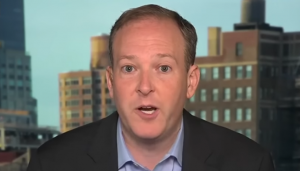U.S. markets headed higher in premarket trading on Tuesday as another round of peace talks between Russia and Ukraine got underway.
On Wall Street, the futures for the S&P 500 and the Dow industrials gained 0.6%, and global shares rose while crude oil prices fell again after sinking 7% on Monday.
Also read: Russia’s troops withdrawing from capital Kyiv, Chernihiv: Ukraine
Markets remain unsettled as investors try to gauge what’s next for inflation and the global economy as the repercussions of Russia’s invasion of Ukraine continue to play out.
The first face-to-face talks in two weeks between Russia and Ukraine began Tuesday in Turkey, raising meager hopes of progress on ending a war that has ground into a bloody campaign of attrition.
The CAC40 in Paris surged 2.9%, Germany’s DAX jumped 2.6% and Britain’s FTSE 100 gained 1.3%.
Also read: What it means to pay for natural gas using rubles: Explained
After early gains, Russia’s MOEX index fell more than 5% in the second day of full trading after it was closed for about a month following the Feb. 24 invasion of Ukraine. Limits have been imposed to curb volatility.
In Asian trading, Tokyo’s Nikkei 225 rose 1.1% to 28,252.42 and the Kospi in Seoul added 0.4% to 2,740.13. The Hang Seng in Hong Kong picked up 0.8% to 21,864.68, while the Shanghai Composite index lost 0.2% to 3,203.94 as the city entered a second day of a lockdown to combat a COVID-19 outbreak.
Also read: Will Russia use nuclear weapons in war with Ukraine: Explained
A two-phase lockdown on Shanghai’s 26 million people is testing the limits of China’s hardline “zero-COVID” strategy whose effects are being felt beyond the country’s borders.
Australia’s S&P/ASX 200 surged 0.7% to 7,464.30 as the government said it plans to increase spending on national security while reducing costs for households, in part by reducing a tax on gasoline. Treasurer Josh Frydenberg was to present the proposed budget Tuesday.
Also Read | Vladimir Putin wants to ‘thrash’ Ukraine’s peace offer: Report
Weaker oil prices have helped push shares higher, said Yeap Jun Rong of IG.
“China, Japan, South Korea and Taiwan are major oil importers, hence lower oil prices may be deemed as positive for their economies,” Yeap said in a commentary.
U.S. crude oil skidded again, falling $3.60 to $102.36 a barrel in electronic trading on the New York Mercantile Exchange. On Monday, it slumped 7% on news of the lockdown in Shanghai, which could dent global demand, Brent crude, the international standard, fell 6.8%.
On Tuesday, Brent slid $3.15 to 106.34 per barrel in London.
Oil prices are up about 40% globally over concerns about tighter supplies as demand remains strong. Higher oil prices are also raising concerns that already persistently high inflation could be worsened, further threatening global economic growth.
Bond yields edged higher. The yield on the 10-year Treasury rose to 2.50% from 2.46% late Monday. Bond yields have been rising as Wall Street prepares for higher interest rates. The Federal Reserve has already announced a 0.25% hike of its key benchmark interest rate and is prepared to continue raising rates to help temper the impacts of rising inflation.
Investors will get more updates this week on just how much inflation is hurting consumers and businesses. The Conference Board will release its consumer confidence index for March on Tuesday. The Commerce Department will release its February report for personal income and spending on Thursday and the Labor Department will release its employment report for March on Friday.
In currency trading, the dollar slipped to 123.57 Japanese yen from 123.77 yen. The euro rose to $1.1087 from $1.0983.






